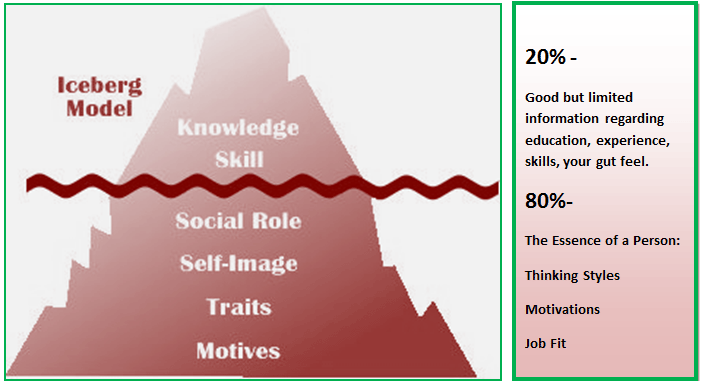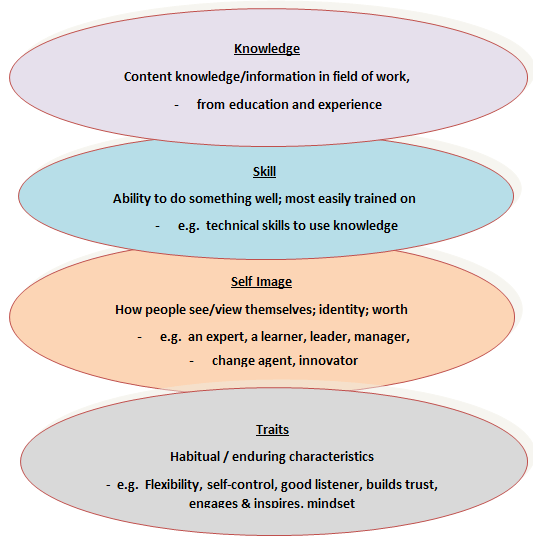The Process of Competency Based Assessment
April 3, 2025
 The Process of Competency Based Assessment
The Process of Competency Based Assessment
The increasing competition and changing business needs demand that the HR professionals responsible for the management of human resources of an organization upgrade and modify their roles and become strategic business partner and an important stakeholder in the growth of the organization. This further translates into the fact that, all the HR strategies, processes and…
 Ethical Considerations in Competency based Assessments
Ethical Considerations in Competency based Assessments
Assessments of any kind have a bearing on the careers of the individuals hence when assessments are carried out certain ethical considerations should be taken care of: Assessments are conducted for several purposes in the organization, whatever the purpose is, it needs to be communicated clearly to all participating members, assessors and administrators The assessment…
 What is Competency Based Assessment – Meaning and Important Concepts
What is Competency Based Assessment – Meaning and Important Concepts
With the ever evolving and diversifying business challenges, the approach to the management of human resources has also undergone a paradigm shift. The competitive advantage achieved through technology, new products and information is short lived and vastly evaporating. The only distinguishing feature from the competition which remains, are the skills and contribution from the employees.…
The iceberg model for competencies takes the help of an iceberg to explain the concept of competency. An iceberg which has just one-ninth of its volume above water and the rest remains beneath the surface in the sea. Similarly, a competency has some components which are visible like knowledge and skills but other behavioural components like attitude, traits, thinking styles, self-image, organizational fit etc are hidden or beneath the surface.
The pictorial representation of the model is as below:

Let us take a look at the different components of the model:

So, is there a relation between the competencies which are above the surface and those which lie beneath? In the book Competence at Work Models for Superior Performance, the authors Lyle M. Spencer and Signe M. Spencer explain that a behaviour is incompletely defined without intent.
The aspects of competencies which lie below the surface like attitude, traits, thinking styles etc directly influence the usage of knowledge and skills to complete a job effectively.
Let us try to understand it through an example.
Suppose an organization is promoting an open door policy which literally means that a manager or supervisor would keep the doors of his/her chamber open to become accessible to their subordinates and encourage sharing of opinions and feedback.
A manager sitting at the farthest corner of the office keeps his door open all the time, how does one evaluate whether it is for fresh air, claustrophobia or an indication that his subordinates are invited to reach out to him anytime. Therefore, intent behind a displayed action is necessary to understand the action and its implication fully.
In more complex jobs, these behavioural aspects, motives and traits become more important than the skills and knowledge required to do the job. Think of a soldier at the war front, he knows how to use the weapon he is holding, but thinks that the war is unjust and refuses to fire.
In organizations, senior level hiring is therefore a time consuming and elaborate affair as it becomes necessary to establish the alignment between the organizational and individual motivation and aspirations.
Developing the two levels of competencies also takes different routes. The visible competencies like knowledge and skills can be easily developed through training and skill building exercises however the behavioural competencies are rather difficult to assess and develop. It takes more time and effort intensive exercises, like psychotherapy, counseling, coaching and mentoring, developmental experiences etc.
In the traditional method of hiring, most of the organizations looked at just the visible components of competencies; the knowledge and skills, believing that the behavioural aspects can be developed through proper guidance and good management. However, with major shifts in the conventional methods of people management, the hiring process has also undergone a change therefore a lot of emphasis is being put on the hidden behavioural aspects as well to make a sound decision.
Hence, a complete picture regarding the competence of a person consists of both visible and hidden aspects and it becomes necessary to understand both to arrive at identifying the best man for a job.
Your email address will not be published. Required fields are marked *